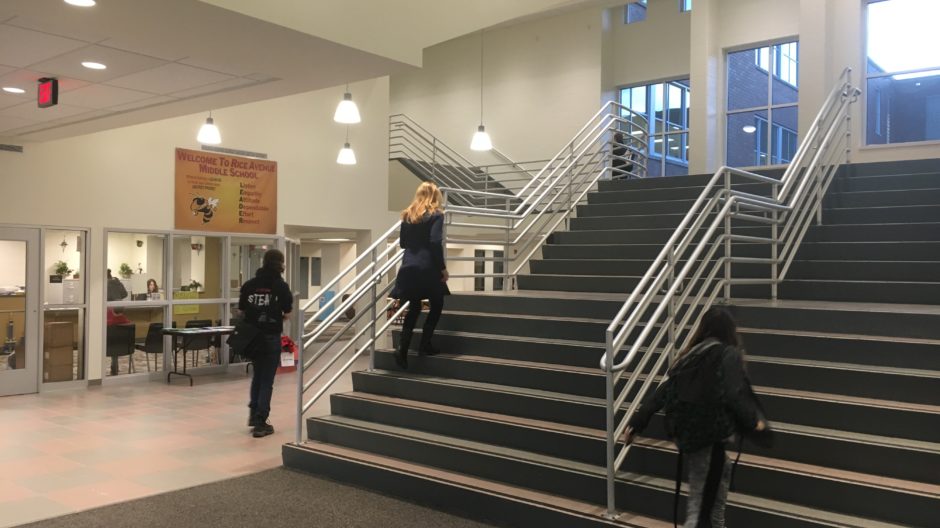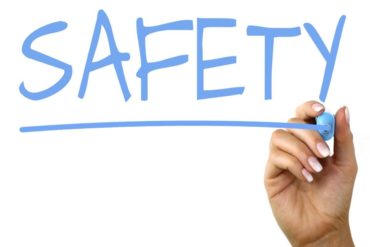Simple Steps to Making School Safer

Much has been said about strategies for making schools safer in reference to intruders and others intent upon injuring students and staff. On March 15, 2018 AIA Pennsylvania testified at the Pennsylvania House of Representatives Education Committee Hearing on School Safety concerning improving Student and School Safety. AIA Pennsylvania (composed of Architects including nationally recognized educational facility planners and designers) provided guidance which has found its way into the proposed changes to Pennsylvania’s process for planning and funding schools. If enacted, there will be targeted funds for school safety projects.
With so many of Pennsylvania’s schools (particularly in rural areas) more than forty years old, the original design of these facilities had little relevance to these relatively recent dangers. It is not necessary to wait for extensive renovations or new construction. There is much that can be done to make schools more resistant to intruders and much of it can be done with relatively low cost.

BUILDING ENTRANCES
The first step is to eliminate multiple entrances. Exits can be maintained but fitted with hardware that does not allow entry from the exterior. This is particularly true if there is direct access to classrooms from the exterior.
The best practice is to have the main entrance consist of a lockable vestibule. This can be unlocked and supervised during periods of heavy traffic, then locked during the bulk of the school day. It is nice if anyone entering the building after the doors are closed is directed into the school by way of the administrative office where they can be closely observed and their access to student areas minimized. While ballistic glass is recommended for new or renovated entrances, merely changing to laminated glazing prevents the ability to easily shatter the glass and enter by force.
In the best of all worlds, the office is located close to the entry, providing both visual supervision and some level of deterrent, but, if not, security cameras can function as a means of visually observing someone who wishes to enter the school as long as they can be contained in the vestibule.
Single entry doors can be fitted with electronic locks which allow staff access to the building when locked, but even these doors should be capable of being supervised visually.
CORRIDORS, STAIR TOWERS AND COMMON SPACES
In new or fully renovated facilities, these areas are usually zoned with the intent of controlling access. This can be difficult in older existing facilities. However, it is not prohibitively expensive to install security cameras to cover these areas. Some areas (such as public rest rooms, showers, etc.) have to be planned to balance privacy needs with security needs, but the intent is to create the ability to observe any public area of the school (and record the activity) when needed.
ALL doors from public spaces should be locked to avoid the ability for someone to hide. Ideally restroom doors can be eliminated by use of vision screens.
CLASSROOMS
It goes without saying that all classroom doors should be locked except when students are actively coming and going. There are many levels of lock security, but a simple dead latch activated by a lever from the inside and a key from the outside can be added to any vintage of door. Ideally doors should have closers (spring hinges are an inexpensive solution) so that, unless propped open, they are always closed and locked.
Most classroom doors have a vision panel which is generally accepted as a safety feature (particularly since, in Pa. doors are required to swing outward). A simple application of a transparent safety film on the interior of these vision panels prevents the window from being easily broken out (even after automatic weapon fire). Since these vision panels are relatively small, they do not afford a view of the entire classroom in most cases. With minimal observation, the portion of the room which is not visible from the vision panel can be determined and marked off with flooring finishes or even tape. Then students can be instructed to move to that portion of the room upon any alarm.
COMMUNICATIONS
All schools should have some type of “all call” communication so that an alarm can be sent telling everyone to remain in the safe portion of their classrooms. Ideally, the communication should be two- way without the need for a handset. Obviously, automatic connection to a 911 center is essential.
BUILDING GROUNDS
There is a direct correlation between the learning success and emotional wellness with natural light. Windows are a weak link in the protection from an outside active shooter, but it is relatively easy to train occupants how to get out of sight. Paying attention to minimizing areas of thick vegetative cover near to the school building as well as having some procedures to minimize and detect the ability for an unauthorized person to roam the building grounds will decrease the opportunity for this type of attack. Bollards protecting entrances from vehicular attack and control of access to drives and parking areas is not prohibitively expensive.
AWARENESS
No school administration ever thinks that violence or terrorism will happen at their school. Unfortunately, even communities that we all used to regard as “safe” have become targets. No one wants the process of going to school to feel like visiting a prison, but it is just good sense to have frequent discussions with staff and students as to how to minimize the deadly impact of a senseless act. Perhaps this awareness is one of the most effective defenses.
This paper is in addition to AIA Pennsylvania remarks presented by the Recommendations to Improve School Safety witness panel at the House Education Committee Hearing on School Safety on March 15th, 2018 in Harrisburg, Pennsylvania.

